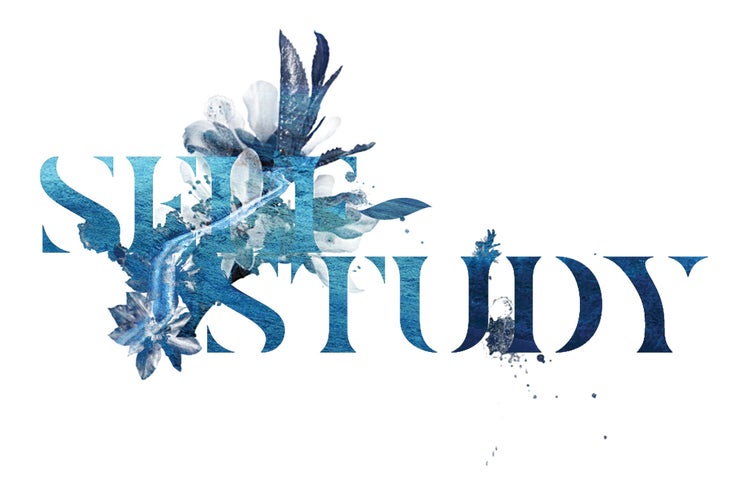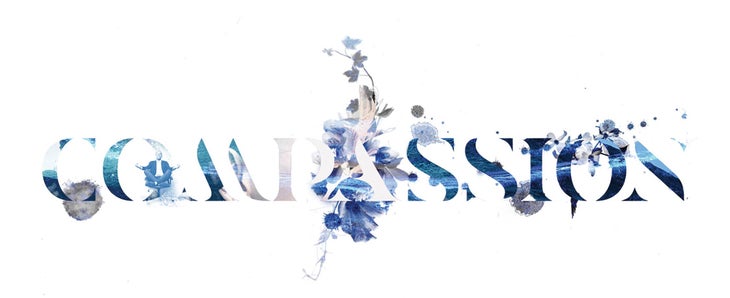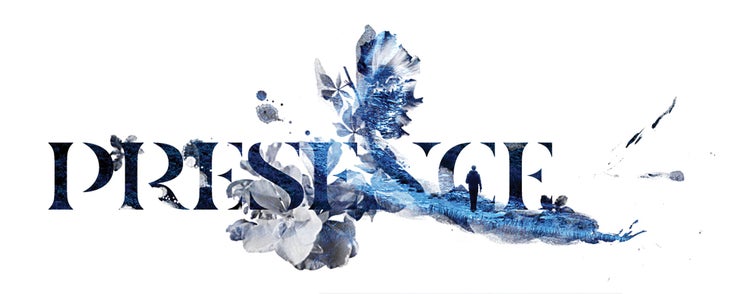Heading out the door? Read this article on the new Outside+ app available now on iOS devices for members! Download the app.
Our yoga and mindfulness practices occupy a cherished part of our lives. They make us more aware, allow us to feel a greater sense of connection, and, ideally, inspire us to act kinder toward ourselves and one another. The goal, of course, is to take these benefits off the mat and out into the world. But it’s not always easy, especially on the job.

Work-related stress is rampant. Through public health crises and economic uncertainty, many of us are looking for new ways to make a living in jobs that require us to be on the frontlines or constantly navigating Zoom-meeting schedules, all while keeping our spirits up and our children up to date with schoolwork.
In this always-on, always-connected world, the lines between work and the rest of our lives have blurred, especially for those who have transitioned to working from home. This lack of work/life balance was evident even before the pandemic: Research shows Americans were regularly forgoing vacation time or working on their days off out of fear of falling behind. In many industries, people are working harder and putting in longer hours yet feel less respected on the job than ever before. A 2018 Gallup study found that at the root of most employee burnout is lackluster management—including workplace bullying, unreasonable workloads, poor communication, and lack of clarity around roles.
But don’t quit your job to join a monastery just yet: There are hopeful signs that this might be changing. A new kind of leadership is emerging, one that promotes workplaces where employees feel seen and heard and where success is measured not only in economic terms, but also by the value of the work to everyone involved. Importantly, these leaders aren’t just making gestures. They’re modeling this ethos for everyone around them.
We asked CEOs, entrepreneurs, and leadership experts about how the lessons and benefits found in yoga and meditation can provide a useful guide for inspiring others, and for doing business and organizing institutions better. Even if you aren’t a workplace manager, this shared wisdom can help you set boundaries to protect your health, steer your household through trying times, and have hard conversations about social justice with family and friends.

The Collaborator
- Name: Mike Brady
- Occupation: Former CEO of Greyston Bakery, social justice champion
- Leadership Strategy: Collaboration
A successful business isn’t a solo venture. At best, it’s a collaboration among stakeholders at every level—the executives, the workers, the community where the business is located, the customers it serves, all the way out into the culture that supports it and the world beyond. That’s the kind of thinking that motivates Mike Brady, a leading advocate for this new leadership model.
As president and CEO of Greyston Bakery, the commercial outfit that provides brownies to Ben & Jerry’s, Delta Airlines, and Whole Foods, Brady oversaw the business’s growth from $10 million to $20 million over four years. He also spearheaded the launch of the Center for Open Hiring at Greyston, a hub for developing best practices and advising other businesses on how to extend their definition of who is employable. This concept of Open Hiring was pioneered at Greyston, where anyone physically able and willing to work is eligible for a six-month paid apprenticeship and potential full-time employment after that.
The Open Hiring model encourages leaders to think differently about filling open jobs and making people successful in them, Brady says. There are no résumés and no background, credit, or drug checks. If every business in the country were to hire a single person it may have previously considered unemployable, Brady says, it would solve some of the real problems around income inequality, poverty, and criminal justice.
Brady credits his longtime meditation practice—at the Shambhala Center in New York City and later training as a meditation instructor at the Chopra Center—for shaping his belief that business can be a force of good in our world. It was what attracted him to Greyston Bakery, where the mindful philosophies of nonjudgment, embracing uncertainty, compassion, and loving-action were “for lack of a better term, fully baked into the business,” Brady says.
Companies that are built on values that acknowledge our human connection have a North Star to help guide decisions, he says. It’s not a cure-all, but having these values in place means “you don’t debate whether or not you’re going to do the right thing,” he says.
Brady cites an example from the bakery that he says is commonplace in manufacturing: The factory has to run no matter what, even when a nor’easter is blowing in. Having values of inclusivity and fairness in place so that workers can get home safely during such events turns employee management into a question of how to handle the situation fairly and with kindness, rather than if.
Values can’t simply be aspirations hung on a poster in the break room; they have to be communicated and modeled throughout the organization. The actual practice comes down to listening and learning what people need in order to be successful in their jobs, Brady says.
“We need to recognize that not everyone has the same challenges getting to and being successful at work,” Brady says. He suggests that the question leaders should be asking is, “How do you take time to work with your team members to have them be the best they can be, so your business can be the best it can be?”

The Teacher and the Student
- Name: Amina Naru
- Occupation: Former co-executive director of the Yoga Service Council, owner of POSH Yoga, and cofounder of Retreat to Spirit
- Leadership Strategy: Self-study
Leaders are often thought of as CEOs, business owners, or top-level managers. But Amina Naru, who teaches yoga to underserved populations, including in juvenile detention centers and adult facilities, points out that leaders can also be social service professionals, solo entrepreneurs, and heads of families.
Knowing yourself is essential to leading with kindness in all of these roles. “It’s the diving in that allows people to show up in a more compassionate way of living,” she says.
Naru should know; she’s had to do the work herself. While she was growing up, Naru’s parents struggled with drug abuse, leaving her emotionally abandoned and physically unprotected. As an adult, she was diagnosed with depression and wrestled with anger. When she first tried yoga in her 30s—using a beginner’s DVD by Elena Brower—she found the practice did more than release muscle tension. “After a couple of weeks, I realized how much better I felt, not just in my body,” she recalls. “I began to get tapped into the fact that I was hurting and in pain, mentally and emotionally.”
A few months later, a friend invited her to attend a hot yoga class that changed her world. “I had a profound awakening and deep emotional experience,” Naru says. She began taking classes every day she could. “Each class felt like a release of the many things I was holding internally for years,” she says. “Things I hadn’t thought about in years were coming to the surface to be acknowledged and released.” She recalls weeping in Savasana (Corpse Pose) or in her car after class.
Naru’s yoga practice gave her the tools to uncover the roots of her seasonal depression. Asana, she explains, “helped me begin to feel. The meditations helped me to understand why I was the way I was, and it was my actions and what I chose to do with this information that helped me to heal.”
These were the tools she wanted to share with troubled youths as well as incarcerated adults.
Yoga takes people inward where they begin understanding their own minds, as well as their triggers and reactions, Naru says. That awareness gives us a chance to pause before we react and the ability to instead reach for a tool, such as deep breathing, to help us calm down.
“I find myself telling the kids, ‘If I had these practices at your age, I think I would have been a lot better off in life,’ ” she says.
Through this work, as well as the leadership trainings she teaches with Pamela Stokes Eggleston, Naru is showing people what yoga taught her: how going inward is the first step to integration of all parts of yourself, to feel whole, and how that integration can help you be a more authentic leader, informing the way you show up in the world—whether that is as a leader of an organization or in your own life.

The Caregiver
- Name: Pamela Stokes Eggleston
- Occupation: Former co-executive director of the Yoga Service Council,
founder of Yoga2Sleep, and cofounder
of Retreat to Spirit - Leadership Strategy: Compassion
Pamela Stokes Eggleston didn’t set out to become a champion of compassionate leadership. But as cofounder of an organization that supports military families, a former co-executive director of the Yoga Service Council, and now as a business owner, she’s learned through experience.
And what she’s discovered, she says, is that “you have to have your own practice and do your own work.”
Self-study can lead to compassion: Being inquisitive about her own nature is a daily practice, she explains, even if she has time for just five minutes of asana and five minutes of mindfulness meditation. And sometimes mindfulness simply means leaving her phone in the car when she goes to the grocery store so that she can be present with the people she encounters there.
This is the message she shares with her clients, from caregivers to entrepreneurs to executives.
“You can practice mindfulness while driving or in the shower,” she says. “You can do some pranayama while you’re sitting in traffic.” The idea, she says, is to embody these tools so that you can access them throughout your day.
A single point of concentration can help calm the nervous system. Breathing can get you through a tough situation. A micro-meditation can be used before making a hard decision or navigating a meeting. A self-compassion practice can help you extend compassion to others as you manage challenging situations.
And as a leader, it’s particularly important to model the techniques and their effects for those around you, Stokes Eggleston says: “If you can do this in your personal life, then companies can help employees uses these same techniques in the professional world.”
Stokes Eggleston is often hired to teach in corporate or organizational settings. And while she’s happy that more businesses have wellness programs, she notes that these offerings have to actually work for people. Classes scheduled for noon, or first thing in the morning before regular business hours, aren’t accessible to everyone.
Organizations such as LinkedIn, which has an office in Washington, DC, are doing it right, she says. There, she taught at 10 a.m.—even though it meant employees had to step away from their work to take part. This, she says, is an example of leadership actually caring whether employees get the benefits you’re offering. “It’s asking, How can I help my people?” Stokes Eggleston says. “The circle has to be wider than yourself.”
LEARN MORE: Study with Amina and Pamela in their six-week course on self-care with Yoga Journal.

The Philosopher
- Name: Rajesh Rai
- Occupation: Human rights barrister and cofounder of donation platform and ethical marketplace Sahoja
- Leadership Strategy: The Yama
When, as a human rights lawyer in London, Rajesh Rai noted a lack of “ethical leadership” in the world, he was moved to add another title to his résumé: cofounder of donation platform and ethical marketplace Sahoja.
A longtime student of yoga, Rai is encouraged by growing interest in “a meaningful economy,” one that works for all. His business, Sahoja, which is a Sanskrit word his team interprets as “stronger together,” is a digital platform designed to benefit everyone involved and support a kinder world. Through it, community members earn points for engaging in good deeds and for purchases made in an online marketplace of goods and services that are ethically sourced and delivered. Select nonprofits receive monetary donations based on how members choose to allocate those points.
The founding principles behind Sahoja come straight from the yama and niyama, the guiding precepts of yoga philosophy. Rai says he was particularly inspired by verse II.31 of the Yoga Sutra. This sutra says the yama, or the five restraints that inform personal behavior, are not affected by facts of class, time, place, or circumstance. Rai adds, “The yama are universally applicable.”
What that means, he says, is that they can be applied to all areas of a business. For example, when choosing vendors for Sahoja’s marketplace and the nonprofit organizations it supports, Rai inquires about how employees are treated and whether there is a non-discrimination policy in place, something he feels is a basic principle of the yama ahimsa (nonviolence).
The yama of satya (truthfulness) applies to the financial transparency of these same vendors and organizations, Rai says.
Aparigraha (nonposessiveness), he explains, is practiced by making sure all involved in the platform benefit—from the founders and members to the vendors and nonprofits. And the entire enterprise is built on the foundation of asteya (nonstealing), which Rai likens to having positive impact. “We need to preserve these ancient ideas and also allow them to adapt to the times we’re in,” he says.

The Meditator
- Name: Michael Carroll
- Occupation: Former Wall Street and Disney executive, mindful-leadership consultant, and author of Awake at Work
- Leadership Strategy: Presence
The executives that Michael Carroll works with know something has to change. As an organizational expert, executive coach, and best-selling author of mindful-leadership books, he’s hired to help businesses navigate difficult problems, such as corporate buyouts and top-level management changes.
Two challenges are central to successful leaders, he says: “There’s the technical functional component—managing the project, shipping the product, meeting the technical objective, and so forth,” he says. “The second parallel challenge is the emotional agenda that people bring to the work. When the emotional agenda is healthy, it aligns itself with the technical agenda profoundly—there’s passion, excitement, enthusiasm, trust. When the emotional agenda doesn’t align,” he continues, “the workplace is haunted by anger, resentment, lack of trust, demeaning behavior. Essentially, toxicity. In the end, eliminating toxic workplaces is about fostering healthy emotions that align with the mission and daily work.”
He points to statistics showing that 60 million Americans say they are bullied at work and don’t feel engaged there. “I would say somewhere between 60 to 70 percent of the problems executives are bedeviled with have less to do with the actual content of the work but are more about how people conduct themselves—how people experience work as healthy or unhealthy,” he says.
And this, he believes, is why there’s growing interest in compassionate leadership.
“Getting from point A to point B as efficiently, profitably, and effectively as possible is often what people define as leadership,” he says. “In the case of mindful or compassionate leadership, there is something more than just arriving at point B. We must arrive there with our collective sanity intact.”
He finds that words like “compassion,” however, don’t resonate with the C-suite. So he talks about being humble, open, or courageous instead. But the tool he employs—mindful awareness—is always the same. And it works.
Executives have to look at their own minds, Carroll says: “There’s a saying, ‘The easy part is being right, the hard part is being skillful.’ That’s where meditation comes in. When you switch attention from internal discursiveness to focusing on the breath, when you’re no longer putting your thought process first, you are opening to your experience unconditionally.
“When that happens,” he continues, “you begin to become more curious about your situation, beyond your biases or preconceptions, and you’re not as quick to come to conclusions. You listen deeper; you don’t have to lead with your point of view. You’re more curious about what’s really being said.” That way of seeing helps leaders discover opportunities, anticipate problems, resolve conflicts, and so much more.
Compassion is a natural byproduct of meditation. It is essentially opening unconditionally to the world on its terms, not ours, and this ability is a powerful leadership tool. Offering our attention in this way to someone who is angry or confused, or creative or passionate—this is the basis for inspiring the best in others, Carroll says: “Leadership is not just about meeting our objectives, it’s also about inspiring a sane and dignified world.”